From entertainment to work applications, touchscreen tablets are a great tech tool, and there’s an ever-evolving array to choose from. But how do you know which is the best tablet for you?
If you’re shopping around for a new tablet, first it’s important to weigh up exactly what you need it to do. Is it for work, play, or a bit of both?
Do you want to just keep the kids entertained with YouTube and Netflix videos during long drives? Or do you need a tablet to tackle demanding work applications? Perhaps it’s just for flicking through news feeds on the sofa at home? Pinpointing your tablet priorities will help to establish the models and budget you should be looking at.
The following guide looks at tablet features you should keep in mind – from the operating system, to screen size and processing power – along with some current tablets on offer at different price points.
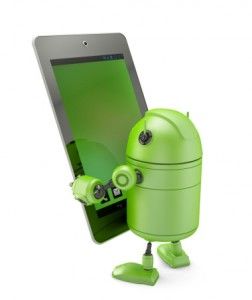
Tablet operating systems
In narrowing down which tablet’s best for you, a good starting point is to compare the different operating systems available and how they differ when it comes to user experience.
An operating system is the software that manages how you interact with a tablet. This affects everything, from the design and accessibility of the touchscreen, to its range of in-built features, and the apps it’s capable of running.
There are three operating systems commonly available:
- Android – Samsung and Lenovo are among the manufacturers offering tablets running Google’s Android operating system. There are many different models at prices to meet all budgets, from low to mid-range and premium price points. There’s also a huge range of apps available via the Google Play Store, from gaming, to entertainment and education.
- iPadOS – Apple’s iPadOS operating system is built for its iPad line. Apple regularly releases new iPad models, though they tend to be in the mid- to high-price range. There’s a vast selection of apps available via Apple’s App Store, and Apple highlights the ability to discover new apps.
- Windows – the Windows operating system has, of course, typically been associated with desktops and laptops. But Windows 10 sees Microsoft incorporate “tablet mode” for touchscreen operation. There are a range of apps available via the Microsoft Store, from entertainment to productivity, including Microsoft Office apps.
It’s also worthwhile keeping in mind compatibility with other devices, and ensuring that app support is provided for any devices you intend on using in conjunction with a tablet.

Tablet features
Tablets are typically designed to function as multi-purpose devices – from streaming videos, to gaming, online browsing, sending emails and making video calls – and, for this reason, there are a range of features worthwhile weighing up.
Beyond the attention-grabbing exterior features, such as cameras, it’s important not to lose sight of what’s powering a tablet under its hood. This is especially true if you’re keen on a model capable of tackling demanding applications.
Tablet features to consider include:
- Display – screen size is measured diagonally across the device. At the smaller end of the scale, there are 7- or 8-inch (approx 18-20cm) tablets. Larger models measure in at around the 10-inch (25cm) mark. Resolution is measured in pixels (such as a 2000 x 1200 resolution)
- Processor – if powerful performance is a priority, it’s worthwhile seeking out a model with a top-of-the-line processor, capable of providing the grunt required
- Storage – greater internal storage will come in handy for managing files, and storing media such as videos and photos. Many tablets also offer removable microSD storage
- Camera – tablets typically come with front-facing and rear-facing cameras, allowing for a range of functions, from taking photos and videos, to making video calls
- Connectivity – Wi-fi and Bluetooth connectivity are standard features, while some tablets also offer 4G connectivity. USB ports allow for the connection of external devices
- Battery life – if you’re out and about a lot, without ready access to a power point, greater battery life should be a priority
- Design and dimensions – tablets are typically designed to be portable, providing for ease of use while on the go. As a rule, a tablet weighs more than a smartphone but less than a laptop
It’s also worthwhile considering whether you’ll need any accessories, such as keyboard or stylus pen, and the additional costs involved. Also, if the tablet is for a child, you’ll need to check if there are protective carry cases available.
Researching the fastest broadband plans
Ultimately, whatever tablet you choose, you’ll need the best broadband. So it’s always worth doing a little research into the best and fastest broadband deals. To help you get a clearer picture of broadband providers in NZ, Canstar Blue rates all the big providers in the market annually. We survey thousands of broadband customers and ask them to score their providers across categories including Value for Money, Network Performance and Customer Service.
Canstar Blue’s 2020 review of NZ internet providers compares NOW, 2degrees, Bigpipe, Contact, MyRepublic, Orcon, Skinny, Slingshot, Spark, Stuff Fibre, Trustpower, Vodafone and Voyager, and awards the best our 5 Star rating:
^ By clicking on a brand or 'details' button, you will leave Canstar Blue and be taken to either a product provider website or a Canstar Blue NZ brand page. You agree that Canstar Blue NZ’s terms and conditions apply (without limitation) to your use of this service,to any referral to a product provider from our website, and any transaction that follows. Canstar Blue may earn a fee for referrals from its website tables, and from sponsorship (advertising) of certain products. Payment of sponsorship fees does not influence the star rating that Canstar Blue awards to a sponsored product. Fees payable by product providers for referrals and sponsorship may vary between providers, website position, and revenue model. Sponsorship fees may be higher than referral fees. Sponsored products are clearly disclosed as such on website pages. They may appear in a number of areas of the website such as in comparison tables, on hub pages and in articles. Sponsored products may be displayed in a fixed position in a table, regardless of the product’s rating, price or other attributes. The table position of a sponsored product does not indicate any ranking, rating or endorsement by Canstar Blue. See How we are funded for further details.
Canstar Blue NZ research finalised in May 2024, published in June 2024.
See Our Ratings Methodology
The table above is an abridged version of our full research, so to find out more about NZ’s best broadband providers, just click on the big button at the bottom of this story.
Best tablets
The following range of recently released tablets includes models available at a variety of prices. We’ve covered tablets offering all-round adaptability. From those with the processing power required to undertake demanding applications, to entertainment and family options.
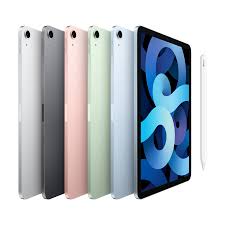
iPad Air: All-round power and adaptability
Apple’s iPad Air provides all-round power and adaptability. Apple states it “delivers a massive boost in performance”, thanks to a new advanced chip. This makes it easier for users to undertake a variety of applications, from editing 4K videos to playing immersive games.
iPad Air features:
- Display – a 10.9-inch (27.7cm) Liquid Retina display (2360 x 1640 resolution; 264ppi)
- Operating system – iPadOS 14
- Processor – A14 Bionic chip with 64-bit architecture
- Storage – a choice of 64 and 256GB capacities
- Camera – a 12MP wide rear camera, with 4K video recording at 24, 30 or 60fps, and a 7MP FaceTime HD front camera, with 1080p HD video recording at 60fps
- Connectivity – Wi-fi 6; Bluetooth 5.0; 4G LTE (wi-fi + cellular models); one USB-C port
- Battery – up to 10 hours of battery life surfing the web on wi-fi or watching video, and up to nine hours surfing the web using a mobile data network (wi-fi + cellular models)
- Design and dimensions – available in silver, space grey, rose gold, green and sky blue finishes; measuring 247.6 x 178.5 x 6.1mm. Wi-fi models weigh 458g and the wi-fi + cellular models 460g
- Accessories – the iPad Air can be paired with accessories including Apple’s Magic Keyboard and the Apple Pencil (additional costs apply)
Price – the Apple website lists prices for the iPad Air starting at $999*.
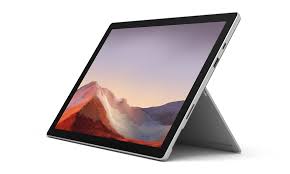
Surface Pro 7: A portable workhorse
Microsoft’s Surface Pro 7 falls firmly into the portable workhorse category. Microsoft describes it as delivering “tablet-to-laptop versatility”. It sports the processing power to support applications at home and in the office.
Surface Pro 7 features:
- Display – a 12.3-inch (31.2cm) PixelSense display (2736 x 1824 resolution; 267ppi)
- Operating system – Windows 10 Home
- Processor – a choice of dual-core 10th Gen Intel Core i3-1005G1, quad-core 10th Gen Intel Core i5-1035G4 and quad-core 10th Gen Intel Core i7-1065G7 processors
- Storage – SSD options of 128, 256 or 512GB, or 1TB
- Camera – an 8MP auto-focus rear-facing camera with 1080p full-HD video, and a 5MP front-facing camera with 1080p full-HD video
- Connectivity – Wi-fi 6; Bluetooth 5.0; one USB-C port and one USB-A port
- Battery – battery life of up to 10.5 hours of typical device usage
- Design and dimensions – a unibody magnesium design with hidden perimeter venting, available in platinum and matte black colours; measuring 292 x 201 x 8.5mm. The i3 and i5 models weigh 775g and the i7 model 790g
- Accessories – the Surface Pro 7 can be paired with a range of accessories, including a Type Cover and Surface Pen (additional costs apply)
Price – the Microsoft website lists prices for the Surface Pro 7 starting at $1399*.
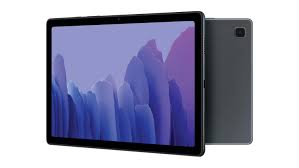
Galaxy Tab A7: Decked out for entertainment
Samsung’s Galaxy Tab A7 is designed to deliver when it comes to entertainment. Samsung highlights its video streaming and gaming capabilities, supported by a wide and dynamic display, and Dolby Atmos surround sound output from quad speakers.
Galaxy Tab A7 features:
- Display – a 10.4-inch (26.4cm) WUXGA+ display (2000 x 1200 resolution)
- Operating system – Android
- Processor – an octa-core 2GHz, 1.8GHz CPU
- Storage – 32GB (19.5GB available memory); microSD support for up to 1TB
- Camera – an 8MP auto-focus rear camera, and a 5MP front camera
- Connectivity – Wi-fi 5; Bluetooth 5.0; 4G LTE; a USB-C (2.0) port
- Battery – a battery capacity of 7040mAh, around 13 hours of general usage
- Design and dimensions – a metal design with a dark grey colour; measuring 157.4 x 247.6 x 7mm. The wi-fi model weighs 476g and the 4G model 477g
Price – the Samsung website lists the Galaxy Tab A7 (wi-fi) priced at $399 and the Galaxy Tab A7 (4G) priced at $499*.
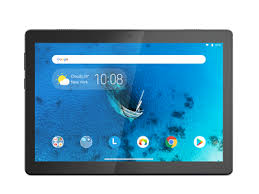
Tab M10 (HD): Entertainment on a budget
Lenovo describes its Tab M10 (HD) as an affordable “family entertainment tablet”. Kids Mode provides parental control features, while dual front-facing speakers and Dolby Audio are designed to deliver an immersive sound experience.
Tab M10 (HD) features:
- Display – a 10.1-inch (25.6cm) HD display (1280 x 800 resolution)
- Operating system – Android 9.0
- Processor – Qualcomm Snapdragon 429 (4C, 4x A53 @2.0GHz)
- Storage – 32GB eMMC; microSD support for up to 256GB
- Camera – a rear 5MP auto-focus camera, and a front 2MP fixed-focus camera
- Connectivity – Wi-fi 5; Bluetooth 4.2
- Battery – 4850mAh, providing a standby time of around three weeks, online video playback of around nine hours and a browsing time of around seven hours
- Design and dimensions – a slate black colour; measuring 243.2 x 169.2 x 8.45mm and weighing 480g
Price – the Lenovo website lists prices for the Tab M10 (HD) starting at $199*.
*Further information on pricing can be found at individual retailer websites. This should be used as a starter guide and not considered an actual quote.
Compare broadband providers for free with Canstar!
Enjoy reading this article?
You can like us on Facebook and get social, or sign up to receive more news like this straight to your inbox.
By subscribing you agree to the Canstar Privacy Policy


Share this article